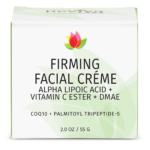Activated Charcoal
Activated Charcoal, also known as activated carbon, is a form of carbon processed to have small, low-volume pores that increase the surface area available for adsorption or chemical reactions. Made from carbonaceous sources like wood, coconut shells, and peat, activated charcoal undergoes a heating or chemical activation process to expand its adsorption capacity. This makes it highly effective at trapping chemicals, toxins, and gases, which is why it’s widely used in both medical treatments and cosmetic products.
In medical settings, activated charcoal is used to treat poisonings and overdoses, acting by binding to toxins in the stomach and preventing their absorption into the bloodstream. Its detoxifying properties also make it popular in skincare and oral health products; it’s used in facial masks, cleansers, and toothpastes to draw out impurities, reduce pore size, and help in whitening teeth, respectively. While it’s celebrated for its purifying effects, activated charcoal should be used with caution to avoid inhaling particles or overuse, which can lead to dehydration or reduced absorption of essential nutrients.
Activated carbon, also called activated charcoal, is a form of carbon commonly used to filter contaminants from water and air, among many other uses. It is processed (activated) to have small, low-volume pores that greatly increase the surface area available for adsorption or chemical reactions. (Adsorbtion, not to be confused with absorption, is a process where atoms or molecules adhere to a surface). Activation is analogous to making popcorn from dried corn kernels: popcorn is light, fluffy, and its kernels have a high surface-area-to-volume ratio. Activated is sometimes replaced by active.

Because it is so porous on a microscopic scale, one gram of activated carbon has a surface area of over 3,000 square metres (32,000 square feet), as determined by gas adsorption. For charcoal the equivalent figure before activation is about 2–5 square metres. A useful activation level may be obtained solely from high surface area. Further chemical treatment often enhances adsorption properties.
Activated carbon is usually derived from waste products such as coconut husks; waste from paper mills has been studied as a source. These bulk sources are converted into charcoal before being activated. When derived from coal it is referred to as activated coal. Activated coke is derived from coke.









